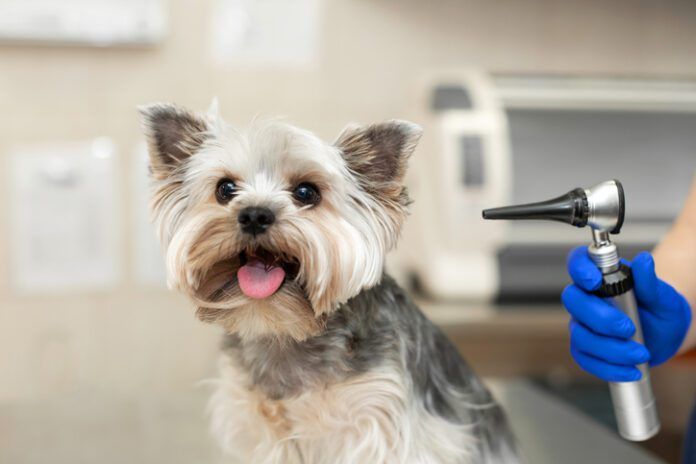Here is how I initially teach hand signals for Down, Sit, and Come. I encourage my students to start with big hand signals, like the ones most people use in obedience competition. No one wants to risk having their dog miss the signal from across the ring!
- Down: Hold a treat in your right hand. With your dog sitting in front of you, stand with both arms relaxed at your sides. Raise your right arm straight up. A second after your arm reaches its full height, fingers pointed toward the ceiling, say your verbal “Down” cue. Pause for another second. If your dog does not lie down, lower your right hand to his nose and lure him down with the treat. Click! (or “Yes!”) and treat. Repeat this exercise until he will lie down for the hand signal and verbal cue without the lure. When he has done at least a half dozen downs without the lure, give the hand signal (arm raised) without the verbal cue. If he goes down, Click! and Jackpot! That is, feed him lots of treats, one at a time, in special recognition of his ac- complishment. If he doesn’t lie down, do another dozen repetitions with both cues, and then try again with just the hand signal. You will probably be surprised by how quickly he does it.
- Sit: Hold a treat in your left hand this time. With your dog lying down in front of you, stand with both arms relaxed at your sides. Bring your left arm up in a circular motion in front of your chest with your elbow bent, then straighten it out to your left side, parallel to the ground, in a “ta-da!” sort of flourish. A second after your arm straightens, say your verbal “Sit” cue. Pause for another second. If your dog does not sit, bring your arm down and lure him up with the treat in your hand. Click! (or “Yes!”) and treat. Repeat until he will sit for just the hand signal and verbal cue without the lure. When he has done at least a half dozen sits with- out the lure, give the hand signal (arm raised) without the verbal cue. If he sits, Click! and Jackpot! If he doesn’t, do another dozen repetitions with both cues, and then try again with just the hand signal. Keep repeating until he gets it. Then practice this from the “Stand” position as well.
- Come: If your dog is well trained, you can leave him on a sit- or down-stay and walk five feet away. If his stay is not rock-solid, have someone hold him on a leash while you walk away. Turn and face him, with your arms at your sides and a treat in your right hand. Fling your right arm up and out to your side, as if you wanted to smack someone standing behind you. A second after your arm is out and parallel to the ground, say your verbal “Come!” cue. If he does not come, hold your arm parallel to the ground for another second, then bend your elbow and sweep the treat past his nose, ending up with your hand in front of your chest. If necessary, take a step or two back to encourage your dog to get up and come to you. Repeat this exercise until he will come for the hand signal and verbal cue without the lure. When he has done at least six or so recalls with- out the lure, give the hand signal without the verbal cue. If he comes, Click! and Jackpot! If he doesn’t, do another dozen repetitions with both cues, and then try again with just the hand signal. When he starts responding, begin practicing the hand-signal “Come” from increasingly greater distances.
For more advice on ways to live with a dog who is losing his hearing, purchase Canine Hearing Loss from Whole Dog Journal.






